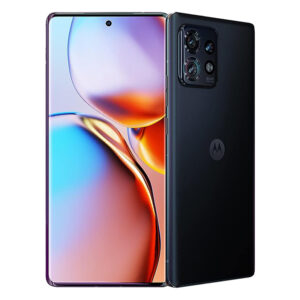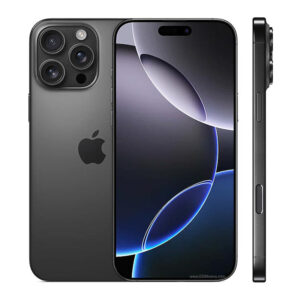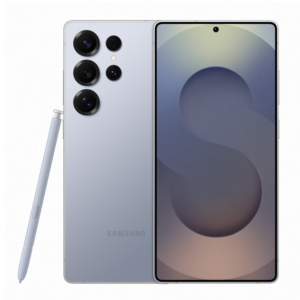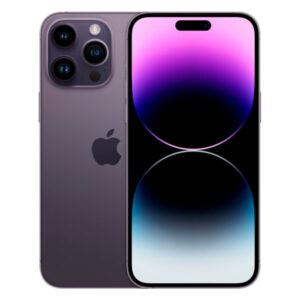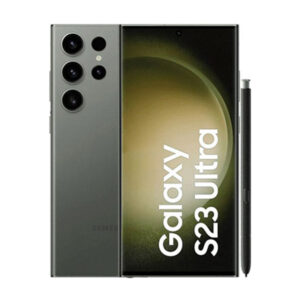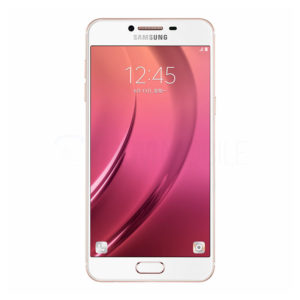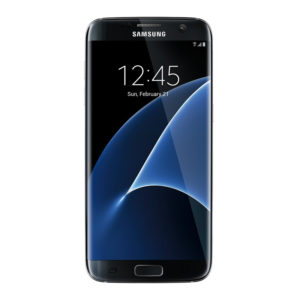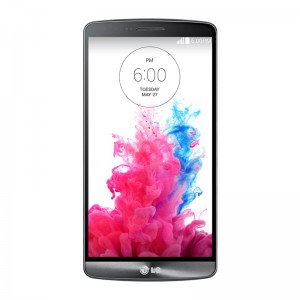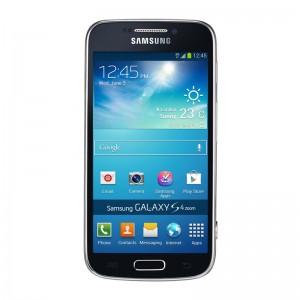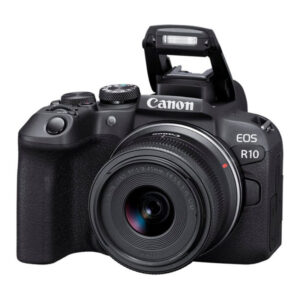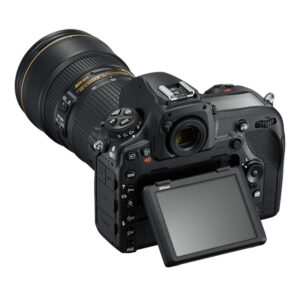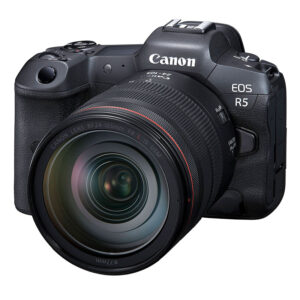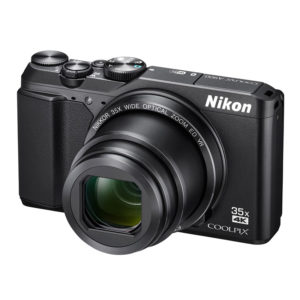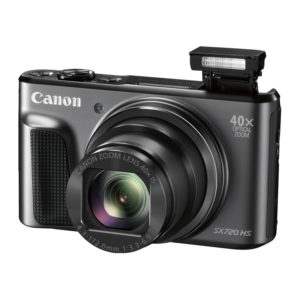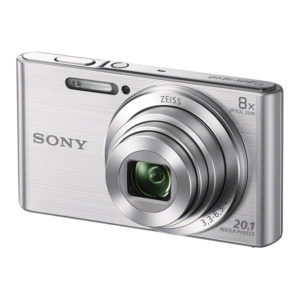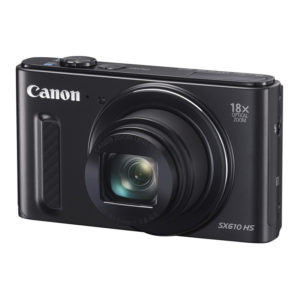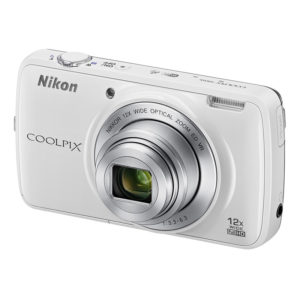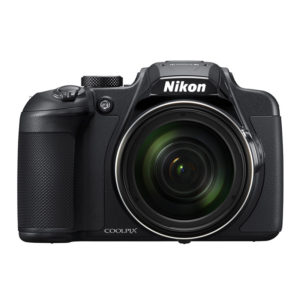Display Full Product
Apple iPhone 14 Pro Max Unlocked
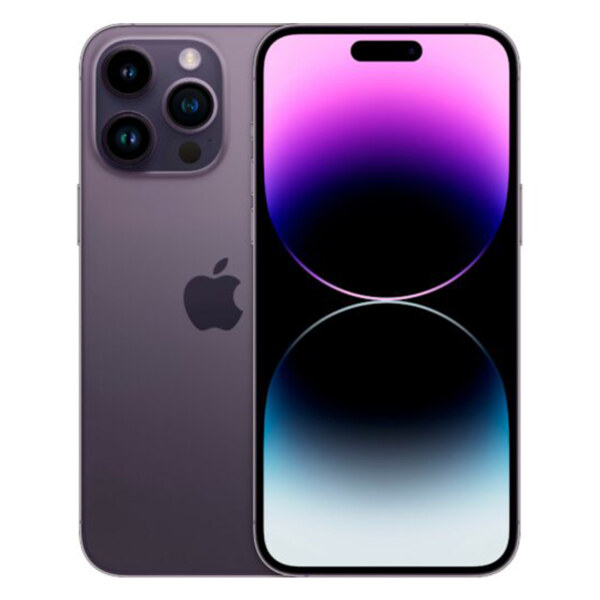


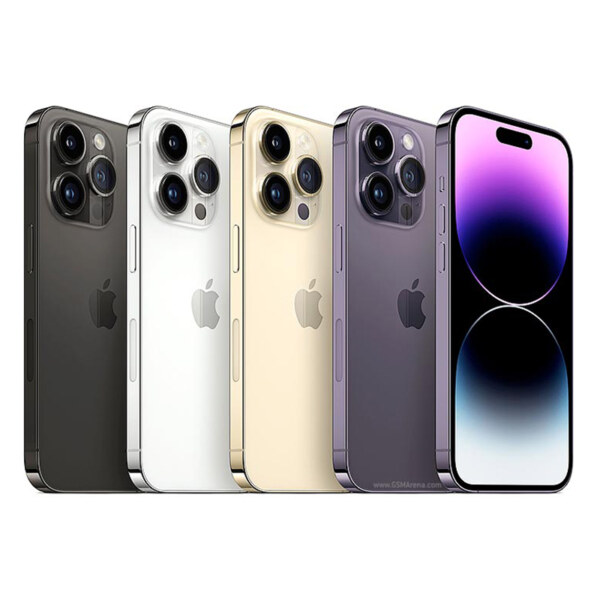
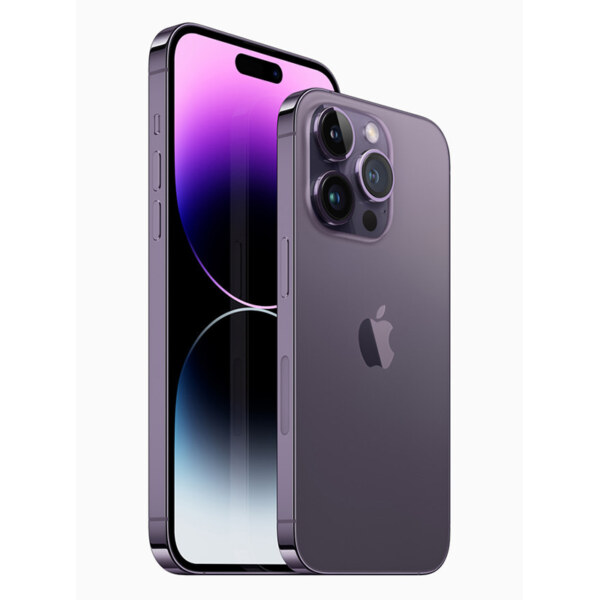
PROS
- flat 6.7-inch OLED display
- quad-pixel 48MP main camera
- A16 Bionic chip 6-core CPU
- large 4,400 mAh battery
CONS
- no fingerprint scanner
- lack of microSD card slot
- does not have a headphone jack
The iPhone 14 Pro Max is the most advanced and powerful smartphone that Apple has made. It offers a stunning design, a superb display, a pro-level camera system, and a blazing-fast performance. It is not a cheap device, but it is worth every penny if you are looking for the best of the best.
Design: The iPhone 14 Pro Max has a sleek and elegant design that feels premium in the hand. It has a flat 6.7-inch OLED display that covers almost the entire front of the device, with a pill-shaped notch at the top that houses the Face ID sensors and the selfie camera. The back of the device is made of textured matt glass that resists fingerprints and scratches, and the frame is made of stainless steel that adds durability and shine. The device comes in four beautiful colors: Space Black, Silver, Gold, and Deep Purple. The iPhone 14 Pro Max also has an IP68 rating, which means it can withstand water up to 6 meters deep for up to 30 minutes.
Display: The display of the iPhone 14 Pro Max is one of its main highlights. It features a Super Retina XDR OLED display with a resolution of 2796×1290 pixels and a pixel density of 460 ppi. The display supports HDR10 and Dolby Vision, which means it can deliver stunning colors and contrast for watching videos and playing games. The display also has a refresh rate of 120Hz, which makes everything look smoother and more responsive. The display uses ProMotion technology, which adapts the refresh rate to the content on the screen, saving battery life and improving performance. The display also has an Always-On feature, which shows your personalized lock screen with your favorite widgets without having to tap the screen.
Camera: The camera system of the iPhone 14 Pro Max is another major selling point. It features a quad-camera setup on the rear, consisting of a 48MP main camera, a 12MP ultra-wide camera, a 12MP 2x telephoto camera, and a 12MP 3x telephoto camera. The main camera has a quad-pixel sensor that can capture more detail and light in every shot. It also has a second-generation sensor-shift optical image stabilization, which reduces blur and shake in low-light conditions. The ultra-wide camera has a 120-degree field of view, which lets you capture more scenery and perspective in your photos. The telephoto cameras have optical-quality zoom, which lets you get closer to your subject without losing quality. The camera system also supports Night mode, Portrait mode, Panorama mode, Macro mode, Photographic Styles, and Smart HDR 4, which enhance your photos with advanced algorithms and effects. The camera system also supports Cinematic mode, which lets you shoot professional-looking videos in 4K HDR at 24 fps with depth-of-field control. You can also edit your videos in ProRes or Dolby Vision HDR formats on your device or on your Mac.
Performance: The iPhone 14 Pro Max is powered by the A16 Bionic chip, which is the most powerful processor that Apple has ever created. It has a 6-core CPU, a 5-core GPU, and a 16-core Neural Engine, which work together to deliver fast and smooth performance for any task. The A16 Bionic chip can handle demanding workloads such as gaming, video editing, augmented reality, machine learning, and more with ease. It also has a power-efficient design, which allows it to run at high speeds for longer without draining the battery.
Battery: The battery life of the iPhone 14 Pro Max is impressive as well. It has a large 4,400 mAh battery that can last up to 29 hours of video playback or up to 23 hours of video streaming on a single charge. It also supports fast charging with a USB-C to Lightning cable or a MagSafe charger, which can charge up to 50% in just 30 minutes. It also supports wireless charging with any Qi-compatible charger or accessory.
Overall experience: The iPhone 14 Pro Max is an amazing device that offers everything you could ask for in a smartphone. It has a gorgeous design, a brilliant display, a fantastic camera system, and an incredible performance. It is easy to use and secure with iOS 16, which offers many new features and improvements such as Dynamic Island, Action mode, FaceTime SharePlay, Live Text, Focus, Safari redesign, and more. It also works seamlessly with other Apple devices and services such as AirPods, Apple Watch, iCloud, Apple Music, Apple TV+, Apple Arcade, Apple Pay, and more.
The iPhone 14 Pro Max is not for everyone though. It is a very large and heavy device, which may not be comfortable for some people to hold or carry. It is also very expensive, starting at ₹1,29,900 for the 128GB model and going up to ₹1,69,900 for the 1TB model. It also does not have a headphone jack, a microSD card slot, or a fingerprint scanner, which may be deal-breakers for some users.
However, if you are looking for the ultimate smartphone experience and you don’t mind the size, the price, or the lack of some features, then the iPhone 14 Pro Max is the perfect choice for you. It is a device that will impress you with its design, display, camera, and performance. It is a device that will make you feel like a pro.
Specs
General
| Device Type | Smart Phone |
| Model | A2893, A2894, A2895, A2896 |
| Announced | July, 2022 |
| Released | September, 2022 |
| Status | Available |
Design
| Type Design Type called form factor refers to a mobile phone's size, shape, and style as well as the layout and position of major components of phone. There are three major form factors seen in mobile phones => bar phones, folding phones and sliding phones. | Bar |
| Dimensions | 160.7 x 77.6 x 7.9 mm (6.33 x 3.06 x 0.31 in) |
| Weight | 240 grams |
| Protection | IP68 certified dust/water resistant (up to 6m for 30 min) |
| Colors | Space Black, Silver, Gold, Deep Purple |
Network
| 2G Network | GSM 850 / 900 / 1800 / 1900 SIM1 and SIM2 |
| 3G Network | HSDPA 850 / 900 / 1700(AWS) / 1900 / 2100 |
| 4G Network | LTE band 1(2100), 2(1900), 3(1800), 4(1700/2100), 5(850), 7(2600), 8(900), 12(700), 13(700), 17(700), 18(800), 19(800), 20(800), 25(1900), 26(850), 28(700), 32(1500), 38(2600), 39(1900), 40(2300), 41(2500), 66(1700/2100) |
| 5G Network | 1, 2, 3, 5, 7, 8, 12, 20, 25, 26, 28, 30, 38, 40, 41, 48, 66, 70, 77, 78, 79 SA/NSA/Sub6 |
| SIM SIM (Subscriber Identity Module) is a small card that contains mobile network subscriber's account information. This allows the phone using the card to attach to a mobile network. The SIM card is most commonly associated with GSM and UMTS mobile networks. Moving a SIM card from one phone to another allows a subscriber to switch mobile phones without having to contact their mobile network carrier. SIM cards can also be used by a phone to store limited amounts of data, such as phone numbers and text messages. | Nano SIM |
| Dual SIM | Dual eSIM with multiple numbers |
Display
| Display Type Display Technology => A number of display technologies and types used in mobile phones => TFT (Thin Film Transistor), IPS (In-Place Switching), OLED (Organic Light Emitting Diode), AMOLED (Active-Matrix Organic Light-Emitting Diode), Super AMOLED (an even advanced version of AMOLED), Resistive Touchscreen (Resistive touchscreens contain two layer of conductive material with a very small gap between them which acts as a resistance), Capacitive Touchsceen (Capacitive touchscreen technology consists of a layer of glass coated with a transparent conductor) | LTPO Super Retina XDR OLED, 120Hz, HDR10 |
| Size | 6,7 inches |
| Resolution | 1290 x 2796 pixels |
| Display Colors Display Colors is refers to the number of different shades of colors that the screen is capable of displaying => 64K colors, 256K colors and 16 million colors, Obviously 16M is highest available range of colors and better than others. | 1B colors |
| Pixel Density Pixel Density (PPI) is refers to the concentration of pixels on a particular display, measured in pixels per inch (ppi). Pixel density is calculated by dividing the diagonal pixel resolution of a display by its diagonal size, higher pixel density better display quality. | 460 ppi |
| Touch Screen | Yes, Multitouch |
| Display Protection Display Protection => Gorilla Glass is a special alkali-aluminosilicate glass shield with exceptional damage resistance that helps protect mobile displays from scratches, drops, and bumps of everyday use, It is always better to go for a smartphone with Gorilla Glass for that added protection and peace of mind. | Ceramic Shield glass |
| Features | Always-On display, Dolby Vision, 1000 nits (typ), 2000 nits (HBM) |
Media
| Audio Playback | Yes, MP3, MIDI, WAV, AMR |
| Video Playback | Yes |
| Video Out | Yes |
| FM Radio | No |
| Alert Types | Vibration, ringtones |
| Ring Tones | 64, MP3, WAV |
| Loudspeaker | Yes |
| Handsfree | 3.5mm Headphone Jack |
Camera
| Primary Camera is able to capture photographs and usually videos, The most important characteristics of a camera are the resolution (measured in megapixels), lens focus type (fixed or automatic), higher megapixel cameras are known to capture higher quality photos, but not always a good measurement of the photos quality. | 48 MP, f/1.8, 24mm (wide), 12 MP, f/2.8, 77mm (telephoto), 12 MP, f/2.2, 13mm, 120˚ (ultrawide) |
| Image | 3264 x 2448 pixels |
| Video | 4K@24/25/30/60fps, 1080p@25/30/60/120/240fps 10-bit HDR |
| Camera Features | Geo-tagging, touch focus, face/smile detection, Auto HDR, panorama |
| Flash Flash Light => There is commonly two types of flash lights are used in camera mobile phones, LED Flash (LED flash offers lower power consumption with drive circuitry that takes up very little room, LEDs can be strobed faster than any other light source), Xenon Flash (xenon flash produces an extremely intense full-spectrum white light for a very short duration) | LED flash |
| Secondary | 12 MP, f/1.9, 23mm (wide) |
Software
| Operating System OS => Every computer system run on a base software called Operating System (OS). Operating System controls all basic operations of the computer (such as smartphone, PDAs, tablet computers and other handheld devices). The Operating System allows the user to install and run third party applications (apps), apps are used to add new functionality to the device. | iOS 16, upgradable to iOS 16.5, planned upgrade to iOS 17 |
| User Interface UI or user interface of a device is the look and feel of the on-screen menu system. How it works, its color scheme, how it responds to button presses, all of these things are part of the user interface. | iOS UI |
| Java Support Java for Mobile Devices is a set of technologies that let developers deliver applications and services to all types of mobile handsets, ranging from price efficient feature-phones to the latest smartphones. Java is currently running on over 3 billion phones worldwide, and growing. It offers unrivaled potential for the distribution and monetization of mobile applications. | Yes, via Java MIDP emulator |
| Facebook Facebook is a popular free social networking website that allows registered users to create profiles, upload photos and video, send messages and keep in touch with friends, family and colleagues. The site is available in 37 different languages. | |
| Youtube Youtube is a popular free video-sharing website, Youtube is the largest video sharing site in the world, Millions of users around the world have created accounts on the site that allow them to upload videos that anyone can watch. |
Hardware
| Chipset Chipset is a group of integrated circuits designed to perform one or a more dedicated functions, often with real time computing constraints, Popular smartphones are equipped with more advanced embedded chipsets that can do many different tasks depending on their programming. | Apple A16 Bionic (4 nm) |
| CPU CPU (Central Processing Unit) mostly known as processors, CPU processes instructions in order to carry out certain functions that make your device operate properly. Processors are often described as the brain of computers, smartphones and tablets, Smartphones and tablets rely on processors to carry out their every task, Processors are an incredibly important factor in selecting any type of computing device, including your smartphone. | Hexa-core (2x3.46 GHz Everest + 4x2.02 GHz Sawtooth) |
| GPU GPU (Graphics Processing Unit) is a single-chip processor designed to rapidly manipulate and alter memory to accelerate the creation of images in a frame buffer intended for output to a display, This includes things such as lighting effects, object transformations, and 3D motion. | Apple GPU (5-core graphics) |
| RAM (Memory) RAM (Random Access Memory) is a type of computer memory that can be accessed randomly, any byte of memory can be accessed without touching the preceding bytes that allows information to be stored and accessed quickly from random locations. RAM is the most common type of memory found in computer systems, smartphones, tablets and other electronic devices. | 6 GB |
| Internal Storage Internal Storage is a data storage space (flash memory) mostly used in smartphones, tablets and other electronic devices where operating system, apps, music, photos, videos, files and other user data Is stored. | 128GB, 256GB, 512GB, 1TB |
| Card Slot Memory Card Slot is a special slot for inserting a memory card. Memory cards allow you to expand the phone's built-in memory, A memory card (sometimes called a flash memory card or a storage card) is a small storage medium used to store data such as text, pictures, audio, and video, for use on small, portable or remote computing devices such as mobile phones, mp3 players, digital cameras. | No |
| Sensors Sensors are electronic components that detects and responds to some type of input from the physical environment. The specific input could be light, heat, motion, moisture, pressure and location, The output is generally a signal that is converted to use in computing systems, a location sensor, such as a GPS receiver is able to detect current location of your electronic device. | Fingerprint (under display, ultrasonic), accelerometer, gyro, proximity, compass, barometer |
Connectivity
| Bluetooth Bluetooth is a wireless communications technology for exchanging data between mobile phones, headsets, computers and other network devices over short distances without wires, Bluetooth technology was primarily designed to support simple wireless networking of personal consumer devices. | 5.3, A2DP, LE |
| Infrared Infrared connectivity is an old wireless technology used to connect two electronic devices. It uses a beam of infrared light to transmit information and so requires direct line of sight and operates only at close range. | |
| Wi-fi Wi-Fi is a popular wireless networking technology using radio waves to provide high-speed network connections that allows devices to communicate without cords or cables, Wi-Fi is increasingly becoming the preferred mode of internet connectivity all over the world. | Wi-Fi 802.11 a/b/g/n/ac/6, dual-band, hotspot |
| Wi-fi Hotspot | |
| USB | Lightning, USB 2.0 |
| GPS GPS The Global Positioning System is a satellite-based radio navigation system, GPS permits users to determine their position, velocity and the time 24 hours a day, in all weather, anywhere in the world, In order to locate your position, your device or GPS receiver must have a clear view of the sky. | GPS (L1+L5), GLONASS, GALILEO, BDS, QZSS |
| NFC NFC (Near field communication) is a set of standards for smartphones and similar devices to establish peer-to-peer radio communications with each other by touching them together or bringing them into proximity, usually no more than a few inches. | |
| HDMI HDMI (High-Definition Multimedia Interface) is a compact audio/video interface for transferring uncompressed video data and compressed or uncompressed digital audio data from a HDMI-compliant source device to a compatible computer monitor, video projector, digital television, or digital audio device. | |
| Wireless Charging Wireless Charging (Inductive Charging) uses an electromagnetic field to transfer energy between two objects. This is usually done with a charging station. Energy is sent through an inductive coupling to an electrical device, which can then use that energy to charge batteries or run the device. | Yes, 15W wireless (MagSafe) |
Data
| GPRS GPRS (General Packet Radio Service) is a packet oriented mobile data service on the 2G and 3G cellular communication system's global system for mobile communications (GSM), Generally, GPRS is used for the purpose of wireless data transfer, such as sharing pictures and videos or browsing the Internet via a mobile phone connection. | |
| EDGE EDGE (Enhanced Data GSM Environment) is a wireless network technology generally considered the next step in the 2G network offers data transfer rates up to four times faster than ordinary GSM networks, Generally, EDGE is used for the purpose of wireless data transfer, such as sharing pictures and videos or browsing the Internet via a mobile phone connection. | |
| Speed | HSPA 42.2/5.76 Mbps, LTE-A (3CA) Cat9 450/50 Mbps |
| Web Browser Web Browser => a web browser is a software application used to locate, retrieve and display content on the World Wide Web, including Web pages, images, video and other files, The primary function of a web browser is to render HTML, the code used to design or markup webpages. | Yes, HTML5 |
Messaging
| SMS SMS (Short Messaging Service) is a text messaging service component of phone, Web, or mobile communication systems. It uses standardized communications protocols to allow mobile phone devices to exchange short text messages over the networks. | Yes (threaded view) |
| MMS MMS (Multimedia Messaging Service) is a standard way to send messages that include multimedia content (audio clips, video clips and images) to and from mobile phones over wireless networks using the WAP protocol. | |
| Email Email (Electronic Mail) is a system for receiving, sending, and storing electronic messages, Similar to a letter, email is text messages that may contain files, images, or other attachments sent via the internet to a recipient by using applications and software prograps. An email address is required to receive email, and that address is unique to the user. | Yes |
| IM IM (Instant Messaging) is an exchange of text messages through a software application, it enable you to create a kind of private chat room with another individual in order to communicate in real time over the Internet. | Yes |
Battery
| Battery Type Battery Type => Cell phones run on various kinds of batteries depending on the manufacturer, phone size or shape and features. There are basically four types of cell phone batteries => Lithium Polymer, Lithium Ion, Nickel Metal Hydride and Nickel Cadmium. | Li-Ion (Lithium Ion) |
| Capacity Battery Capacity is a measure (typically in Amp-hr) of the charge stored by the battery, and is determined by the mass of active material contained in the battery. The battery capacity represents the maximum amount of energy that can be extracted from the battery under certain conditions. | Li-Ion 4323 mAh |
| Placement | Non-removable |
| Standby Standby Time is the total amount of time that you can leave your is fully charged, turned on and ready to send and receive calls or data transmissions before completely discharging the battery. | Up to 126 hrs |
| Talk Time Talk Time is the longest time that a single battery charge will last when you are constantly talking on the phone under perfect conditions, Ambient temperature and highly dependent on the cellular network environment such as the distance to the closest cell network tower. | Up to 27 hrs |
| Music Play | Up to 47 hrs |
Reviews
Videos
Offers
-
 Samsung Galaxy S7 Edge Factory Unlocked Phone 32 GB Black
$559.49
Samsung Galaxy S7 Edge Factory Unlocked Phone 32 GB Black
$559.49
View Offer
Display Main Features of Product
Metro Style
CPU
1 GHz Cortex-A8
RAM
512 MB
Storage
8/16/32 GB
Display
LED-backlit IPS LCD, 3.5 inches
Camera
5 mega pixels
OS
iOS 4, upgradable to iOS 7.1.1
List Style
- CPU: 1 GHz Cortex-A8
- RAM: 512 MB
- Storage: 8/16/32 GB
- Display: LED-backlit IPS LCD, 3.5 inches
- Camera: 5 mega pixels
- OS: iOS 4, upgradable to iOS 7.1.1
Iconic Style
Product Teaser
Display Products by Brand(s) in Grid View
- CPU: Mediatek Dimensity 8350 Extreme
- RAM: 8GB, 12GB
- Storage: 256GB, 512GB
- Display: 6.7 inches P-OLED, 120Hz, 720Hz, HDR10+
- Camera: 50MP + 10MP + 50MP Triple Camera
- OS: Android 15 OS
- View Details →
- CPU: Apple A18 Pro (3 nm)
- RAM: 8GB
- Storage: 256GB, 512GB, 1TB
- Display: 6.9 in LTPO Super Retina XDR OLED
- Camera: 48MP + 12MP + 12MP
- OS: iOS 18, upgradable to iOS 18.4
- View Details →
- CPU: Qualcomm SM8550 Octa Core
- RAM: 12GB / 16GB
- Storage: 256GB, 512GB, 1TB
- Display: 6.9 inches Dynamic LTPO AMOLED 2X
- Camera: Quad Camera: 200 MP
- OS: Android 15 One UI7
- View Details →
- CPU: Apple A16 Bionic (4 nm)
- RAM: 6GB
- Storage: 128GB, 256GB, 512GB, 1TB
- Display: 6.7 in LTPO Super Retina XDR OLED
- Camera: 48MP + 12MP + 12MP
- OS: iOS 16, upgradable to iOS 16.5
- View Details →
- CPU: Qualcomm SM8550 Octa Core
- RAM: 8GB
- Storage: 512GB
- Display: 6.67 inches OLED 165Hz
- Camera: 50MP + 50MP multi-directional
- OS: Android 13 OS
- View Details →
- CPU: Qualcomm SM8550 Octa Core
- RAM: 8GB / 12GB
- Storage: 128GB, 256GB, 512GB, 1TB
- Display: 6.8 inches Dynamic AMOLED
- Camera: Quad Camera: 200 MP
- OS: Android 13 OS
- View Details →
- CPU: Qualcomm MSM8996 Snapdragon 821
- RAM: 4 GB
- Storage: 32 GB, 64 GB
- Display: IPS LCD, 5.7 inches
- Camera: 13 mega pixels Dual
- OS: Android v7.0 (Nougat)
- View Details →
- CPU: Qualcomm MSM8952 Snapdragon 617
- RAM: 4 GB
- Storage: 32 GB, 64 GB
- Display: Super AMOLED, 5.2 inches
- Camera: 16 Mega pixels
- OS: Android v6.0 (Marshmallow)
- View Details →
- CPU: Exynos 8890 Octa Core Cortex-A53
- RAM: 4 GB
- Storage: 32 GB, 64 GB, 128 GB
- Display: Super AMOLED, 5.5 inches
- Camera: 12 mega pixels
- OS: Android v6.0 (Marshmallow)
- View Details →
- CPU: Exynos 8890 Octa Core Cortex-A53
- RAM: 4 GB
- Storage: 32 GB, 64 GB, 128 GB
- Display: Super AMOLED, 5.1 inches
- Camera: 12 mega pixels
- OS: Android v6.0 (Marshmallow)
- View Details →
- CPU: Quad-core 2.5 GHz Krait 400
- RAM: 2/3 GB
- Storage: 16/32 GB
- Display: True HD-IPS+ LCD, 5.9 inches
- Camera: 13 mega pixels
- OS: Android v4.4.2 (KitKat)
- View Details →
- CPU: Dual-core 1.5 GHz Cortex-A9
- RAM: 1.5 GB
- Storage: 8 GB
- Display: Super AMOLED, 4.3 inches
- Camera: 16 mega pixels
- OS: Android v4.2.2 (Jelly Bean), upgradable to v4.4.2 (KitKat)
- View Details →
Display Products by Categories in List View
- Camera: 24.2 Megapixels
- Video: 3840 x 2160 @ 120p 4K UHD
- Display: 3.15 in Clear View LCD II
- Image Resolution: 8192 x 5464 pixels
- Zoom: Optical zoom lens
- Flash: Yes, support AWLS
- View Details →
- Camera: 46 Megapixels
- Video: 3840 x 2160 at 30/25/24p 4K UHD
- Display: 3.2 inches TFT
- Image Resolution: 8256 x 5504 pixels
- Zoom: 1.2x, 1.5x Digital
- Flash: Yes, support AWLS
- View Details →
- Camera: 45 Megapixels
- Video: 3840 x 2160 @ 120p 4K UHD
- Display: 3.15 in Clear View LCD II
- Image Resolution: 8192 x 5464 pixels
- Zoom: Optical zoom lens
- Flash: Yes, support AWLS
- View Details →
- Camera: 36.3 Megapixels
- Video: 1920x1080 @ 60p FHD
- Display: 3.2 inches TFT
- Image Resolution: 7360 x 4912 pixels
- Zoom: 1.2x, 1.5x Digital
- Flash: Yes, support AWLS
- View Details →
- Camera: 20 MP, CMOS
- Video: 2160p @30fps, 4k UHD
- Display: 3 inches TFT-LCD
- Image Resolution: 5184 x 3888 pixels
- Zoom: 35x Optical, 4x digital
- Flash: Yes, Integrated
- View Details →
- Camera: 20.3 MP, CMOS
- Video: 1080p @60fps
- Display: 3 inches TFT-LCD
- Image Resolution: 5184 x 3888 pixels
- Zoom: 40x Optical, 4x digital
- Flash: Yes, Integrated
- View Details →
- Camera: 20.1 MP, Super HAD CCD
- Video: 720p @30fps
- Display: 2.7 inches TFT-LCD
- Image Resolution: 5152 x 2896 pixels
- Zoom: 8x Optical, 32x digital
- Flash: Yes, Integrated
- View Details →
- Camera: 20.2 MP, CMOS
- Video: 1080p @60fps
- Display: 3 inches TFT-LCD
- Image Resolution: 5184 x 3888 pixels
- Zoom: 18x Optical, 4x digital
- Flash: Yes, Integrated
- View Details →
- Camera: 16 MP, CMOS
- Video: 1080p @30fps
- Display: 3.7 inches TFT-LCD
- Image Resolution: 4608 x 3456 pixels
- Zoom: 12x Optical, 4x digital
- Flash: Yes, Integrated
- View Details →
- Camera: 20.2 MP, CMOS
- Video: 2160p @30fps, 4k UHD
- Display: 3 inches Vari-Angle TFT-LCD
- Image Resolution: 5184 x 3888 pixels
- Zoom: 60x Optical, 4x digital
- Flash: Yes, Integrated
- View Details →
- Camera: 16 MP, CMOS
- Video: 1080p @30fps
- Display: 3 inches TFT-LCD
- Image Resolution: 4608 x 3456 pixels
- Zoom: 50x Optical, 4x digital
- Flash: Yes, Integrated
- View Details →
- Camera: 18.2 MP, Exmor R CMOS
- Video: 1080p @60fps
- Display: 3 inches TFT-LCD
- Image Resolution: 4896 x 3672 pixels
- Zoom: 30x Optical, 60x digital
- Flash: Yes, Integrated
- View Details →
Display Product’s Specs (Attributes)
General
| Device Type | Smart Phone |
| Model | I9500 |
| Announced | March, 2013 |
| Released | April, 2013 |
| Status | Available |
Design
| Type Design Type called form factor refers to a mobile phone's size, shape, and style as well as the layout and position of major components of phone. There are three major form factors seen in mobile phones => bar phones, folding phones and sliding phones. | Bar |
| Dimensions | 136.6 x 69.8 x 7.9 mm (5.38 x 2.75 x 0.31 in) |
| Weight | 130 g (4.59 oz) |
| Colors | White Frost, Black Mist, Arctic Blue, Black Edition |
Network
| 2G Network | GSM 850 / 900 / 1800 / 1900 |
| 3G Network | HSDPA 850 / 900 / 1900 / 2100 |
| 4G Network | LTE 800 / 900 / 1800 / 2600 |
| SIM SIM (Subscriber Identity Module) is a small card that contains mobile network subscriber's account information. This allows the phone using the card to attach to a mobile network. The SIM card is most commonly associated with GSM and UMTS mobile networks. Moving a SIM card from one phone to another allows a subscriber to switch mobile phones without having to contact their mobile network carrier. SIM cards can also be used by a phone to store limited amounts of data, such as phone numbers and text messages. | Micro SIM |
Display
| Display Type Display Technology => A number of display technologies and types used in mobile phones => TFT (Thin Film Transistor), IPS (In-Place Switching), OLED (Organic Light Emitting Diode), AMOLED (Active-Matrix Organic Light-Emitting Diode), Super AMOLED (an even advanced version of AMOLED), Resistive Touchscreen (Resistive touchscreens contain two layer of conductive material with a very small gap between them which acts as a resistance), Capacitive Touchsceen (Capacitive touchscreen technology consists of a layer of glass coated with a transparent conductor) | Super AMOLED |
| Size | 5.0 inches |
| Resolution | 1080 x 1920 pixels |
| Display Colors Display Colors is refers to the number of different shades of colors that the screen is capable of displaying => 64K colors, 256K colors and 16 million colors, Obviously 16M is highest available range of colors and better than others. | 16M colors |
| Pixel Density Pixel Density (PPI) is refers to the concentration of pixels on a particular display, measured in pixels per inch (ppi). Pixel density is calculated by dividing the diagonal pixel resolution of a display by its diagonal size, higher pixel density better display quality. | 441 ppi |
| Touch Screen | Yes, Multitouch |
| Display Protection Display Protection => Gorilla Glass is a special alkali-aluminosilicate glass shield with exceptional damage resistance that helps protect mobile displays from scratches, drops, and bumps of everyday use, It is always better to go for a smartphone with Gorilla Glass for that added protection and peace of mind. | Corning Gorilla Glass 3 |
| Features | Capacitive touchscreen |
Media
| Audio Playback | Yes, MP3, MIDI, WAV, AMR |
| Video Playback | Yes |
| Video Out | Yes |
| FM Radio | No |
| Alert Types | Vibration, ringtones |
| Ring Tones | MP3, WAV |
| Loudspeaker | Yes |
| Handsfree | 3.5mm Headphone Jack |
Camera
| Primary Camera is able to capture photographs and usually videos, The most important characteristics of a camera are the resolution (measured in megapixels), lens focus type (fixed or automatic), higher megapixel cameras are known to capture higher quality photos, but not always a good measurement of the photos quality. | 13 mega pixels |
| Image | 4128 x 3096 pixels |
| Video | Yes, 1080p@30fps, dual-video recording |
| Camera Features | Dual Shot, Auto focus, Simultaneous HD video and image recording, geo-tagging, touch focus, face and smile detection, image stabilization, HDR |
| Flash Flash Light => There is commonly two types of flash lights are used in camera mobile phones, LED Flash (LED flash offers lower power consumption with drive circuitry that takes up very little room, LEDs can be strobed faster than any other light source), Xenon Flash (xenon flash produces an extremely intense full-spectrum white light for a very short duration) | LED flash |
| Secondary | Yes, 2 MP, 1080p@30fps, dual video call |
Software
| Operating System OS => Every computer system run on a base software called Operating System (OS). Operating System controls all basic operations of the computer (such as smartphone, PDAs, tablet computers and other handheld devices). The Operating System allows the user to install and run third party applications (apps), apps are used to add new functionality to the device. | Android v4.3 (Jelly Bean), upgradable to v4.4.2 (KitKat) |
| User Interface UI or user interface of a device is the look and feel of the on-screen menu system. How it works, its color scheme, how it responds to button presses, all of these things are part of the user interface. | TouchWiz |
| Java Support Java for Mobile Devices is a set of technologies that let developers deliver applications and services to all types of mobile handsets, ranging from price efficient feature-phones to the latest smartphones. Java is currently running on over 3 billion phones worldwide, and growing. It offers unrivaled potential for the distribution and monetization of mobile applications. | Yes, via Java MIDP emulator |
| Facebook Facebook is a popular free social networking website that allows registered users to create profiles, upload photos and video, send messages and keep in touch with friends, family and colleagues. The site is available in 37 different languages. | |
| Youtube Youtube is a popular free video-sharing website, Youtube is the largest video sharing site in the world, Millions of users around the world have created accounts on the site that allow them to upload videos that anyone can watch. |
Hardware
| Chipset Chipset is a group of integrated circuits designed to perform one or a more dedicated functions, often with real time computing constraints, Popular smartphones are equipped with more advanced embedded chipsets that can do many different tasks depending on their programming. | Exynos 5 Octa 5410 |
| CPU CPU (Central Processing Unit) mostly known as processors, CPU processes instructions in order to carry out certain functions that make your device operate properly. Processors are often described as the brain of computers, smartphones and tablets, Smartphones and tablets rely on processors to carry out their every task, Processors are an incredibly important factor in selecting any type of computing device, including your smartphone. | Quad-core 1.6 GHz Cortex-A15 |
| GPU GPU (Graphics Processing Unit) is a single-chip processor designed to rapidly manipulate and alter memory to accelerate the creation of images in a frame buffer intended for output to a display, This includes things such as lighting effects, object transformations, and 3D motion. | PowerVR SGX544MP3 |
| RAM (Memory) RAM (Random Access Memory) is a type of computer memory that can be accessed randomly, any byte of memory can be accessed without touching the preceding bytes that allows information to be stored and accessed quickly from random locations. RAM is the most common type of memory found in computer systems, smartphones, tablets and other electronic devices. | 2 GB |
| Internal Storage Internal Storage is a data storage space (flash memory) mostly used in smartphones, tablets and other electronic devices where operating system, apps, music, photos, videos, files and other user data Is stored. | 16/32/64 GB |
| Card Slot Memory Card Slot is a special slot for inserting a memory card. Memory cards allow you to expand the phone's built-in memory, A memory card (sometimes called a flash memory card or a storage card) is a small storage medium used to store data such as text, pictures, audio, and video, for use on small, portable or remote computing devices such as mobile phones, mp3 players, digital cameras. | Yes, microSD, up to 64 GB |
| Sensors Sensors are electronic components that detects and responds to some type of input from the physical environment. The specific input could be light, heat, motion, moisture, pressure and location, The output is generally a signal that is converted to use in computing systems, a location sensor, such as a GPS receiver is able to detect current location of your electronic device. | Accelerometer, gyro, proximity, compass, barometer, temperature, humidity, gesture |
Connectivity
| Bluetooth Bluetooth is a wireless communications technology for exchanging data between mobile phones, headsets, computers and other network devices over short distances without wires, Bluetooth technology was primarily designed to support simple wireless networking of personal consumer devices. | Yes, v4.0 with A2DP, EDR, LE |
| Infrared Infrared connectivity is an old wireless technology used to connect two electronic devices. It uses a beam of infrared light to transmit information and so requires direct line of sight and operates only at close range. | |
| Wi-fi Wi-Fi is a popular wireless networking technology using radio waves to provide high-speed network connections that allows devices to communicate without cords or cables, Wi-Fi is increasingly becoming the preferred mode of internet connectivity all over the world. | Wi-Fi 802.11 a/b/g/n/ac, dual-band, Wi-Fi Direct, DLNA |
| Wi-fi Hotspot | |
| USB | Yes, microUSB v2.0 (MHL 2), USB On-the-go, USB Host |
| GPS GPS The Global Positioning System is a satellite-based radio navigation system, GPS permits users to determine their position, velocity and the time 24 hours a day, in all weather, anywhere in the world, In order to locate your position, your device or GPS receiver must have a clear view of the sky. | Yes, with A-GPS support and GLONASS |
| NFC NFC (Near field communication) is a set of standards for smartphones and similar devices to establish peer-to-peer radio communications with each other by touching them together or bringing them into proximity, usually no more than a few inches. | |
| HDMI HDMI (High-Definition Multimedia Interface) is a compact audio/video interface for transferring uncompressed video data and compressed or uncompressed digital audio data from a HDMI-compliant source device to a compatible computer monitor, video projector, digital television, or digital audio device. | |
| Wireless Charging Wireless Charging (Inductive Charging) uses an electromagnetic field to transfer energy between two objects. This is usually done with a charging station. Energy is sent through an inductive coupling to an electrical device, which can then use that energy to charge batteries or run the device. | No |
Data
| GPRS GPRS (General Packet Radio Service) is a packet oriented mobile data service on the 2G and 3G cellular communication system's global system for mobile communications (GSM), Generally, GPRS is used for the purpose of wireless data transfer, such as sharing pictures and videos or browsing the Internet via a mobile phone connection. | |
| EDGE EDGE (Enhanced Data GSM Environment) is a wireless network technology generally considered the next step in the 2G network offers data transfer rates up to four times faster than ordinary GSM networks, Generally, EDGE is used for the purpose of wireless data transfer, such as sharing pictures and videos or browsing the Internet via a mobile phone connection. | |
| Speed | HSDPA, 42.2 Mbps; HSUPA, 5.76 Mbps; LTE, Cat3, 50 Mbps UL, 100 Mbps DL |
| Web Browser Web Browser => a web browser is a software application used to locate, retrieve and display content on the World Wide Web, including Web pages, images, video and other files, The primary function of a web browser is to render HTML, the code used to design or markup webpages. | Yes, HTML5 |
Messaging
| SMS SMS (Short Messaging Service) is a text messaging service component of phone, Web, or mobile communication systems. It uses standardized communications protocols to allow mobile phone devices to exchange short text messages over the networks. | Yes (threaded view) |
| MMS MMS (Multimedia Messaging Service) is a standard way to send messages that include multimedia content (audio clips, video clips and images) to and from mobile phones over wireless networks using the WAP protocol. | |
| Email Email (Electronic Mail) is a system for receiving, sending, and storing electronic messages, Similar to a letter, email is text messages that may contain files, images, or other attachments sent via the internet to a recipient by using applications and software prograps. An email address is required to receive email, and that address is unique to the user. | Yes |
| IM IM (Instant Messaging) is an exchange of text messages through a software application, it enable you to create a kind of private chat room with another individual in order to communicate in real time over the Internet. | Yes |
Battery
| Battery Type Battery Type => Cell phones run on various kinds of batteries depending on the manufacturer, phone size or shape and features. There are basically four types of cell phone batteries => Lithium Polymer, Lithium Ion, Nickel Metal Hydride and Nickel Cadmium. | Li-Ion (Lithium Ion) |
| Capacity Battery Capacity is a measure (typically in Amp-hr) of the charge stored by the battery, and is determined by the mass of active material contained in the battery. The battery capacity represents the maximum amount of energy that can be extracted from the battery under certain conditions. | 2600 mAh |
| Placement | Removable |
| Standby Standby Time is the total amount of time that you can leave your is fully charged, turned on and ready to send and receive calls or data transmissions before completely discharging the battery. | Up to 370 hrs |
| Talk Time Talk Time is the longest time that a single battery charge will last when you are constantly talking on the phone under perfect conditions, Ambient temperature and highly dependent on the cellular network environment such as the distance to the closest cell network tower. | Up to 17 hrs |
| Music Play | Up to 62 hrs |
Display Products Comparison Dynamically
Samsung Galaxy S7 vs HTC 10 vs LG G6
| Product Name |
Samsung Galaxy S7HTC 10LG G6 |
| Product Image |
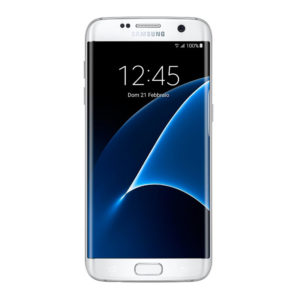
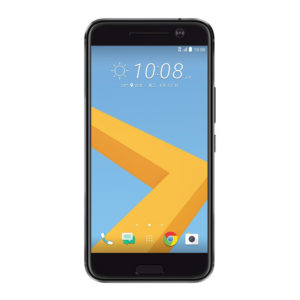
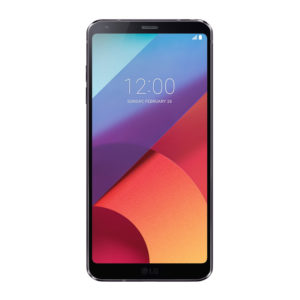
|
| Price |
$599.99
|
| Our Rating | |
| Brand | Samsung HTC LG |
| Category | Mobiles Mobiles Mobiles |
General
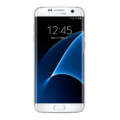 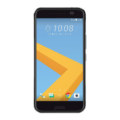  |
|
| Device Type | Smart Phone Smart Phone Smart Phone |
| Model | G930F, G930FD M10 H870, H870DS |
| Announced | February, 2016 April, 2016 February, 2017 |
| Released | March, 2016 May, 2016 March, 2017 |
| Status | Available Available Coming Soon |
Design
   |
|
| Type <strong>Design Type</strong> called form factor refers to a mobile phone's size, shape, and style as well as the layout and position of major components of phone. There are three major form factors seen in mobile phones => bar phones, folding phones and sliding phones. | Bar Bar Bar |
| Dimensions | 142.4 x 69.6 x 7.9 mm (5.61 x 2.74 x 0.31 in) 145.9 x 71.9 x 9 mm (5.74 x 2.83 x 0.35 in) 148.9 x 71.9 x 7.9 mm (5.86 x 2.83 x 0.31 in) |
| Weight | 152 g (5.36 oz) 161 g (5.68 oz) 163 g (5.75 oz) |
| Protection | IP68 certified - dust/water proof over 1.5 meter and 30 minutes IP68 certified - dust/water proof over 1.5 meter and 30 minutes, Water resistant up to 1 meter and 30 minutes |
| Colors | Charcoal Black, Shimmery White, Electric Blue and Copper Gold Carbon Gray, Topaz Gold, Glacier Silver, Camellia Red Mystic white, astro black, ice platinum |
Network
   |
|
| 2G Network | GSM 850 / 900 / 1800 / 1900 - SIM 1 & SIM 2 - G930FD GSM 850 / 900 / 1800 / 1900 GSM 850 / 900 / 1800 / 1900 |
| 3G Network | HSDPA 850 / 900 / 1700(AWS) / 1900 / 2100 - G930F, G930FD HSDPA 850 / 900 / 1700(AWS) / 1900 / 2100 HSDPA 850 / 900 / 1700(AWS) / 1900 / 2100 |
| 4G Network |
LTE band 1(2100), 2(1900), 3(1800), 4(1700/2100), 5(850), 7(2600), 8(900), 12(700), 13(700), 17(700), 18(800), 19(800), 20(800), 25(1900), 26(850), 28(700), 38(2600), 39(1900), 40(2300), 41(2500) - G930F, G930FD
LTE band 1(2100), 3(1800), 5(850), 7(2600), 8(900), 20(800), 28(700), 38(2600), 40(2300), 41(2500) - EMEA LTE band 1(2100), 2(1900), 3(1800), 4(1700/2100), 5(850), 7(2600), 12(700), 13(700), 17(700), 20(800), 28(700), 29(700), 30(2300) - USA LTE band 1(2100), 3(1800), 5(850), 7(2600), 8(900), 20(800), 28(700), 38(2600), 40(2300), 41(2500) - EMEA LTE band 1(2100), 2(1900), 3(1800), 4(1700/2100), 5(850), 7(2600), 12(700), 13(700), 17(700), 20(800), 28(700), 29(700), 30(2300) - USA |
| SIM <strong>SIM</strong> (Subscriber Identity Module) is a small card that contains mobile network subscriber's account information. This allows the phone using the card to attach to a mobile network. The SIM card is most commonly associated with GSM and UMTS mobile networks. Moving a SIM card from one phone to another allows a subscriber to switch mobile phones without having to contact their mobile network carrier. SIM cards can also be used by a phone to store limited amounts of data, such as phone numbers and text messages. | Nano SIM Nano SIM Nano SIM |
| Dual SIM | Yes, G930FD No No |
Display
   |
|
| Display Type <strong>Display Technology => </strong> A number of display technologies and types used in mobile phones => TFT (Thin Film Transistor), IPS (In-Place Switching), OLED (Organic Light Emitting Diode), AMOLED (Active-Matrix Organic Light-Emitting Diode), Super AMOLED (an even advanced version of AMOLED), Resistive Touchscreen (Resistive touchscreens contain two layer of conductive material with a very small gap between them which acts as a resistance), Capacitive Touchsceen (Capacitive touchscreen technology consists of a layer of glass coated with a transparent conductor) | Super AMOLED Super LCD5 IPS LCD |
| Size | 5.1 inches 5.2 inches 5.7 inches |
| Resolution | 1440 x 2560 pixels 1440 x 2560 pixels 1440 x 2880 pixels |
| Display Colors <strong>Display Colors</strong> is refers to the number of different shades of colors that the screen is capable of displaying => 64K colors, 256K colors and 16 million colors, Obviously 16M is highest available range of colors and better than others. | 16M colors 16M colors 16M colors |
| Pixel Density <strong>Pixel Density (PPI)</strong> is refers to the concentration of pixels on a particular display, measured in pixels per inch (ppi). Pixel density is calculated by dividing the diagonal pixel resolution of a display by its diagonal size, higher pixel density better display quality. | 577 ppi 565 ppi 564 ppi |
| Touch Screen | Yes, Multitouch Yes, Multitouch Yes, Multitouch |
| Display Protection <strong>Display Protection => </strong> Gorilla Glass is a special alkali-aluminosilicate glass shield with exceptional damage resistance that helps protect mobile displays from scratches, drops, and bumps of everyday use, It is always better to go for a smartphone with Gorilla Glass for that added protection and peace of mind. | Corning Gorilla Glass 4 Corning Gorilla Glass 3 Corning Gorilla Glass 3 |
| Features |
Always-on display, TouchWiz UI
HTC Sense UI
Dolby Vision/HDR10 compliant Always-on display LG UX 6.0 UI |
Media
   |
|
| Audio Playback | Yes, MP3, MIDI, WAV, AMR Yes, MP3, MIDI, WAV, AMR Yes, MP3, MIDI, WAV, AMR |
| Video Playback | Yes Yes Yes |
| Video Out | Yes Yes Yes |
| FM Radio | No No No |
| Alert Types | Vibration, ringtones Vibration, ringtones Vibration, ringtones |
| Ring Tones | 64, MP3, WAV 64, MP3, WAV 64, MP3, WAV |
| Loudspeaker | Yes Yes Yes |
| Handsfree | 3.5mm Headphone Jack 3.5mm Headphone Jack 3.5mm Headphone Jack |
Camera
   |
|
| Primary <strong>Camera</strong> is able to capture photographs and usually videos, The most important characteristics of a camera are the resolution (measured in megapixels), lens focus type (fixed or automatic), higher megapixel cameras are known to capture higher quality photos, but not always a good measurement of the photos quality. | 12 mega pixels 12 mega pixels 13 mega pixels Dual |
| Image | 3264 x 2448 pixels 3264 x 2448 pixels 3264 x 2448 pixels |
| Video | Yes, 2160p@30fps, 1080p@60fps, 720p@240fps Yes, 2160p@30fps, 1080p@60fps, 720p@240fps Yes, 2160p@30fps, 1080p@60fps, 720p@240fps |
| Camera Features | f/1.7, 26mm, phase detection autofocus, OIS, geo-tagging, simultaneous 4K video, touch focus, face/smile detection, Auto HDR, panorama f/1.8, 26mm, phase detection autofocus, OIS, geo-tagging, simultaneous 4K video, touch focus, face/smile detection, Auto HDR, panorama Dual 13 MP (f/1.8, OIS, 3-axis) + 13 MP (f/2.4), laser autofocus, geo-tagging, touch focus, face detection, HDR |
| Flash <strong>Flash Light => </strong> There is commonly two types of flash lights are used in camera mobile phones, LED Flash (LED flash offers lower power consumption with drive circuitry that takes up very little room, LEDs can be strobed faster than any other light source), Xenon Flash (xenon flash produces an extremely intense full-spectrum white light for a very short duration) | LED flash LED flash LED flash |
| Secondary | Yes, 5 MP, 1080p@30fps Yes, 5 MP, 1080p@30fps Yes, 5 MP, 1080p@30fps |
Software
   |
|
| Operating System <strong>OS => </strong> Every computer system run on a base software called Operating System (OS). Operating System controls all basic operations of the computer (such as smartphone, PDAs, tablet computers and other handheld devices). The Operating System allows the user to install and run third party applications (apps), apps are used to add new functionality to the device. | Android 6.0 (Marshmallow) Android 6.0 (Marshmallow) Android v7.0 (Nougat) |
| User Interface <strong>UI</strong> or user interface of a device is the look and feel of the on-screen menu system. How it works, its color scheme, how it responds to button presses, all of these things are part of the user interface. | TouchWiz HTC Sense UI LG UX 6.0 UI |
| Java Support <strong>Java</strong> for Mobile Devices is a set of technologies that let developers deliver applications and services to all types of mobile handsets, ranging from price efficient feature-phones to the latest smartphones. Java is currently running on over 3 billion phones worldwide, and growing. It offers unrivaled potential for the distribution and monetization of mobile applications. | Yes, via Java MIDP emulator Yes, via Java MIDP emulator Yes, via Java MIDP emulator |
| Facebook <strong>Facebook</strong> is a popular free social networking website that allows registered users to create profiles, upload photos and video, send messages and keep in touch with friends, family and colleagues. The site is available in 37 different languages. | |
| Youtube <strong>Youtube</strong> is a popular free video-sharing website, Youtube is the largest video sharing site in the world, Millions of users around the world have created accounts on the site that allow them to upload videos that anyone can watch. |
Hardware
   |
|
| Chipset <strong>Chipset</strong> is a group of integrated circuits designed to perform one or a more dedicated functions, often with real time computing constraints, Popular smartphones are equipped with more advanced embedded chipsets that can do many different tasks depending on their programming. | Exynos 8890 Octa Qualcomm MSM8996 Snapdragon 820 Qualcomm MSM8996 Snapdragon 821 |
| CPU <strong>CPU</strong> (Central Processing Unit) mostly known as processors, CPU processes instructions in order to carry out certain functions that make your device operate properly. Processors are often described as the brain of computers, smartphones and tablets, Smartphones and tablets rely on processors to carry out their every task, Processors are an incredibly important factor in selecting any type of computing device, including your smartphone. | Octa-core (4x2.3 GHz Mongoose & 4x1.6 GHz Cortex-A53) Quad-core (2x2.15 GHz Kryo & 2x1.6 GHz Kryo) Quad-core (2x2.35 GHz Kryo & 2x1.6 GHz Kryo) |
| GPU <strong>GPU</strong> (Graphics Processing Unit) is a single-chip processor designed to rapidly manipulate and alter memory to accelerate the creation of images in a frame buffer intended for output to a display, This includes things such as lighting effects, object transformations, and 3D motion. | Mali-T880 MP12 Adreno 530 Adreno 530 |
| RAM (Memory) <strong>RAM</strong> (Random Access Memory) is a type of computer memory that can be accessed randomly, any byte of memory can be accessed without touching the preceding bytes that allows information to be stored and accessed quickly from random locations. RAM is the most common type of memory found in computer systems, smartphones, tablets and other electronic devices. | 4 GB 4 GB 4 GB |
| Internal Storage <strong>Internal Storage</strong> is a data storage space (flash memory) mostly used in smartphones, tablets and other electronic devices where operating system, apps, music, photos, videos, files and other user data Is stored. | 32 GB, 64 GB, 128 GB 32 GB 32 GB, 64 GB |
| Card Slot <strong>Memory Card Slot</strong> is a special slot for inserting a memory card. Memory cards allow you to expand the phone's built-in memory, A memory card (sometimes called a flash memory card or a storage card) is a small storage medium used to store data such as text, pictures, audio, and video, for use on small, portable or remote computing devices such as mobile phones, mp3 players, digital cameras. | Yes, microSD, up to 256 GB Yes, microSD, up to 2 TB Yes, microSD, up to 256 GB |
| Sensors <strong>Sensors</strong> are electronic components that detects and responds to some type of input from the physical environment. The specific input could be light, heat, motion, moisture, pressure and location, The output is generally a signal that is converted to use in computing systems, a location sensor, such as a GPS receiver is able to detect current location of your electronic device. |
Fingerprint (front-mounted), accelerometer, gyro, proximity, compass, barometer, heart rate, SpO2
Ambient light sensor, Proximity sensor, Motion G-sensor Compass sensor, Gyro sensor Magnetic sensor, Fingerprint sensor, Sensor Hub Fingerprint (rear-mounted), accelerometer, gyro, proximity, compass, barometer, color spectrum |
Connectivity
   |
|
| Bluetooth <strong>Bluetooth</strong> is a wireless communications technology for exchanging data between mobile phones, headsets, computers and other network devices over short distances without wires, Bluetooth technology was primarily designed to support simple wireless networking of personal consumer devices. | Yes, v4.2 with A2DP, EDR, LE Yes, v4.2 with A2DP, EDR, LE Yes, v4.2 with A2DP, EDR, LE |
| Infrared <strong>Infrared</strong> connectivity is an old wireless technology used to connect two electronic devices. It uses a beam of infrared light to transmit information and so requires direct line of sight and operates only at close range. | |
| Wi-fi <strong>Wi-Fi</strong> is a popular wireless networking technology using radio waves to provide high-speed network connections that allows devices to communicate without cords or cables, Wi-Fi is increasingly becoming the preferred mode of internet connectivity all over the world. | Wi-Fi 802.11 a/b/g/n, dual-band, Wi-Fi Direct Wi-Fi 802.11 a/b/g/n, dual-band, Wi-Fi Direct Wi-Fi 802.11 a/b/g/n, dual-band, Wi-Fi Direct |
| Wi-fi Hotspot | |
| USB | Yes, microUSB v2.0 Yes, microUSB v2.0 Yes, microUSB v2.0 |
| GPS <strong>GPS</strong> The Global Positioning System is a satellite-based radio navigation system, GPS permits users to determine their position, velocity and the time 24 hours a day, in all weather, anywhere in the world, In order to locate your position, your device or GPS receiver must have a clear view of the sky. | Yes, with A-GPS support and GLONASS, BDS Yes, with A-GPS support and GLONASS, BDS Yes, with A-GPS support and GLONASS, BDS |
| NFC <strong>NFC</strong> (Near field communication) is a set of standards for smartphones and similar devices to establish peer-to-peer radio communications with each other by touching them together or bringing them into proximity, usually no more than a few inches. | |
| HDMI <strong>HDMI</strong> (High-Definition Multimedia Interface) is a compact audio/video interface for transferring uncompressed video data and compressed or uncompressed digital audio data from a HDMI-compliant source device to a compatible computer monitor, video projector, digital television, or digital audio device. | |
| Wireless Charging <strong>Wireless Charging</strong> (Inductive Charging) uses an electromagnetic field to transfer energy between two objects. This is usually done with a charging station. Energy is sent through an inductive coupling to an electrical device, which can then use that energy to charge batteries or run the device. | Yes, Quick Charge 2.0 Yes, Quick Charge 3.0 Yes, Quick Charge 3.0 |
Data
   |
|
| GPRS <strong>GPRS</strong> (General Packet Radio Service) is a packet oriented mobile data service on the 2G and 3G cellular communication system's global system for mobile communications (GSM), Generally, GPRS is used for the purpose of wireless data transfer, such as sharing pictures and videos or browsing the Internet via a mobile phone connection. | |
| EDGE <strong>EDGE</strong> (Enhanced Data GSM Environment) is a wireless network technology generally considered the next step in the 2G network offers data transfer rates up to four times faster than ordinary GSM networks, Generally, EDGE is used for the purpose of wireless data transfer, such as sharing pictures and videos or browsing the Internet via a mobile phone connection. | |
| Speed | HSPA 42.2/5.76 Mbps, LTE-A (3CA) Cat9 450/50 Mbps HSPA, LTE-A (3CA) Cat9 450/50 Mbps, EV-DO Rev.A 3.1 Mbps HSPA 42.2/5.76 Mbps, LTE-A (3CA) Cat12 600/150 Mbps |
| Web Browser <strong>Web Browser => </strong> a web browser is a software application used to locate, retrieve and display content on the World Wide Web, including Web pages, images, video and other files, The primary function of a web browser is to render HTML, the code used to design or markup webpages. | Yes, HTML5 Yes, HTML5 Yes, HTML5 |
Messaging
   |
|
| SMS <strong>SMS</strong> (Short Messaging Service) is a text messaging service component of phone, Web, or mobile communication systems. It uses standardized communications protocols to allow mobile phone devices to exchange short text messages over the networks. | Yes (threaded view) Yes (threaded view) Yes (threaded view) |
| MMS <strong>MMS</strong> (Multimedia Messaging Service) is a standard way to send messages that include multimedia content (audio clips, video clips and images) to and from mobile phones over wireless networks using the WAP protocol. | |
| Email <strong>Email</strong> (Electronic Mail) is a system for receiving, sending, and storing electronic messages, Similar to a letter, email is text messages that may contain files, images, or other attachments sent via the internet to a recipient by using applications and software prograps. An email address is required to receive email, and that address is unique to the user. | Yes Yes Yes |
| IM <strong>IM</strong> (Instant Messaging) is an exchange of text messages through a software application, it enable you to create a kind of private chat room with another individual in order to communicate in real time over the Internet. | Yes Yes Yes |
Battery
   |
|
| Battery Type <strong>Battery Type => </strong> Cell phones run on various kinds of batteries depending on the manufacturer, phone size or shape and features. There are basically four types of cell phone batteries => Lithium Polymer, Lithium Ion, Nickel Metal Hydride and Nickel Cadmium. | Li-Ion (Lithium Ion) Li-Ion (Lithium Ion) Li-Ion (Lithium Ion) |
| Capacity <strong>Battery Capacity</strong> is a measure (typically in Amp-hr) of the charge stored by the battery, and is determined by the mass of active material contained in the battery. The battery capacity represents the maximum amount of energy that can be extracted from the battery under certain conditions. | 3000 mAh 3000 mAh 3300 mAh |
| Placement | Non-removable Non-removable Non-removable |
| Standby <strong>Standby Time</strong> is the total amount of time that you can leave your is fully charged, turned on and ready to send and receive calls or data transmissions before completely discharging the battery. | Up to 280 hrs Up to 456 hrs |
| Talk Time <strong>Talk Time</strong> is the longest time that a single battery charge will last when you are constantly talking on the phone under perfect conditions, Ambient temperature and highly dependent on the cellular network environment such as the distance to the closest cell network tower. | Up to 22 hrs Up to 27 hrs |
| Music Play | Up to 62 hrs Up to 60 hrs |




